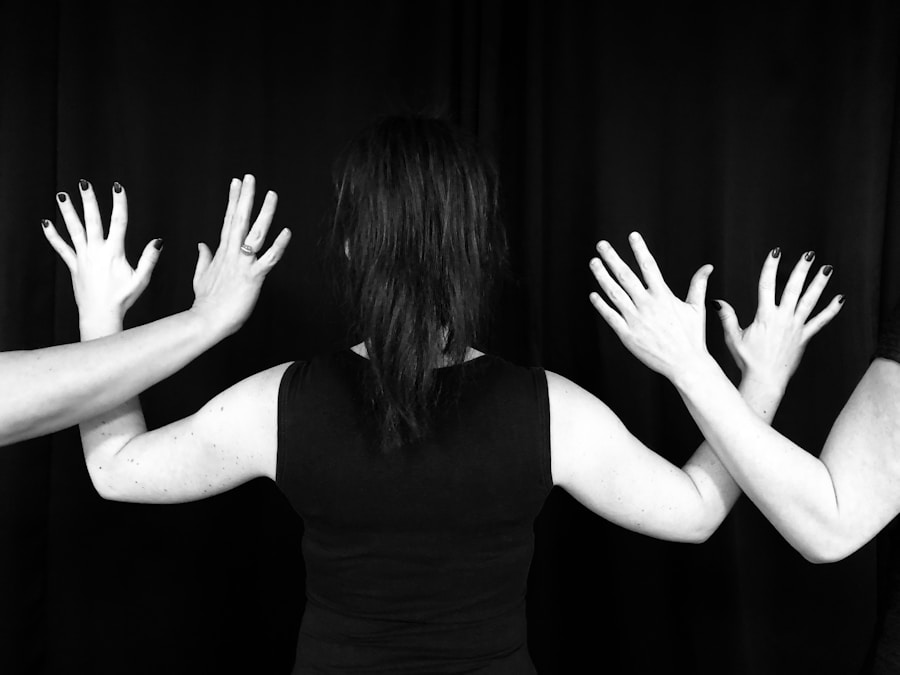Non-verbal communication plays a crucial role in how we convey messages and emotions. It encompasses a wide range of behaviors, including facial expressions, gestures, posture, and even the physical distance we maintain from others. Research suggests that a significant portion of our communication—estimated to be as high as 93%—is non-verbal.
For instance, a simple smile can express warmth and friendliness, while crossed arms may signal defensiveness or discomfort. In many situations, non-verbal communication can either reinforce or contradict verbal messages.
For example, if someone says they are happy but their facial expression is one of sadness, the inconsistency can lead to confusion and mistrust. This phenomenon highlights the need for individuals to be aware of their own non-verbal signals and how they may be perceived by others. In interpersonal relationships, whether personal or professional, the ability to read and respond to non-verbal cues can significantly enhance understanding and connection between individuals.
Key Takeaways
- Non-verbal communication is just as important as verbal communication in conveying messages and building relationships.
- Understanding gestures and their meanings is crucial for effective communication, as different cultures may interpret gestures differently.
- Eye contact is a powerful tool in communication, as it conveys confidence, sincerity, and attentiveness.
- Using body language to convey confidence and openness can help in building trust and rapport with others.
- Non-verbal skills are essential in professional settings, as they can impact how others perceive and interact with you.
Understanding Gestures and Their Meanings
Gestures are a fundamental aspect of non-verbal communication, serving as a bridge between spoken language and physical expression. They can vary widely across cultures, making it essential to understand their meanings in different contexts. For instance, the thumbs-up gesture is commonly interpreted as a sign of approval in many Western cultures, while in some Middle Eastern countries, it can be considered offensive.
This cultural variability emphasizes the importance of context when interpreting gestures. Moreover, gestures can be classified into several categories, including emblems, illustrators, regulators, and adaptors. Emblems are gestures that have a specific meaning and can stand alone without accompanying speech; for example, waving goodbye is universally understood.
Illustrators, on the other hand, are used to complement verbal communication by emphasizing or clarifying a point—such as using hand movements to describe the size of an object. Regulators help manage the flow of conversation, such as nodding to indicate understanding or agreement. Adaptors are often unconscious movements that reveal our emotional state, like fidgeting with a pen when anxious.
Understanding these categories can enhance one’s ability to communicate effectively and interpret the intentions of others.
The Power of Eye Contact in Communication

Eye contact is one of the most powerful forms of non-verbal communication. It serves multiple functions: it can signal attention, interest, and engagement in a conversation. When individuals maintain eye contact, it often conveys confidence and sincerity.
Conversely, avoiding eye contact may suggest discomfort, disinterest, or even deceit. The nuances of eye contact can vary significantly across cultures; for instance, in some Asian cultures, prolonged eye contact may be perceived as disrespectful, while in Western cultures, it is often seen as a sign of honesty and assertiveness. The impact of eye contact extends beyond mere social interactions; it plays a vital role in professional settings as well.
In job interviews or presentations, maintaining appropriate eye contact can enhance credibility and rapport with the audience. A study conducted by researchers at the University of Illinois found that speakers who maintained eye contact were perceived as more competent and trustworthy than those who did not. This finding highlights the importance of being mindful of eye contact in various contexts to foster effective communication and build positive relationships.
Using Body Language to Convey Confidence and Openness
Body language is a critical component of non-verbal communication that can significantly influence how one is perceived by others. Adopting an open posture—such as uncrossed arms and legs—can convey confidence and approachability. When individuals stand or sit with their arms crossed or hunched shoulders, they may appear defensive or closed off.
In contrast, an open stance invites engagement and signals that one is receptive to interaction. Moreover, the way one occupies space can also communicate confidence. For example, taking up more space by standing tall with shoulders back can project authority and self-assuredness.
This concept is often referred to as “power posing,” which suggests that adopting expansive postures can not only influence how others perceive us but also affect our own feelings of confidence. Research by social psychologist Amy Cuddy indicates that individuals who engage in power posing before high-stakes situations—such as interviews or public speaking—report feeling more confident and are more likely to succeed.
Non-Verbal Skills in Professional Settings
In professional environments, non-verbal communication skills are paramount for effective collaboration and leadership. The ability to read non-verbal cues can enhance teamwork by fostering a deeper understanding among colleagues. For instance, recognizing when a team member appears disengaged or anxious can prompt a supportive response that encourages open dialogue and problem-solving.
Additionally, leaders who are adept at non-verbal communication can inspire trust and loyalty within their teams by demonstrating empathy through their body language. Furthermore, non-verbal communication is essential during presentations and meetings.
Additionally, being aware of one’s own non-verbal signals—such as posture and facial expressions—can help convey enthusiasm and commitment to the topic at hand. In high-stakes negotiations or client interactions, mastering non-verbal communication can be the difference between success and failure.
Improving Your Non-Verbal Communication Skills

Improving non-verbal communication skills requires self-awareness and practice. One effective method is to engage in reflective observation; this involves paying attention to your own body language during conversations and considering how it may be perceived by others. Recording yourself during practice sessions or real conversations can provide valuable insights into your non-verbal cues and areas for improvement.
Additionally, seeking feedback from trusted friends or colleagues can help identify specific behaviors that may need adjustment. For instance, if you tend to avoid eye contact during discussions, asking for feedback on this aspect can encourage you to become more conscious of your gaze patterns. Practicing mindfulness techniques can also enhance your ability to remain present in conversations, allowing you to respond more effectively to both verbal and non-verbal cues from others.
Engaging in role-playing exercises can further develop your non-verbal communication skills by simulating various social scenarios where you can practice different gestures, postures, and eye contact techniques. By actively participating in these exercises, you can build confidence in your ability to communicate effectively without relying solely on words. Over time, these practices will contribute to a more nuanced understanding of non-verbal communication and its impact on interpersonal interactions across various contexts.
If you are interested in exploring the theory of illocutionary forces, performative and constant utterances, you may find this article to be a fascinating read. Understanding Aristotelian syllogistic logic, the square of opposition, and more can also provide valuable insights into communication and reasoning. For a different topic, you may want to delve into an in-depth exploration of algal cell structure, components, pigment systems, and reproduction by checking out






















+ There are no comments
Add yours